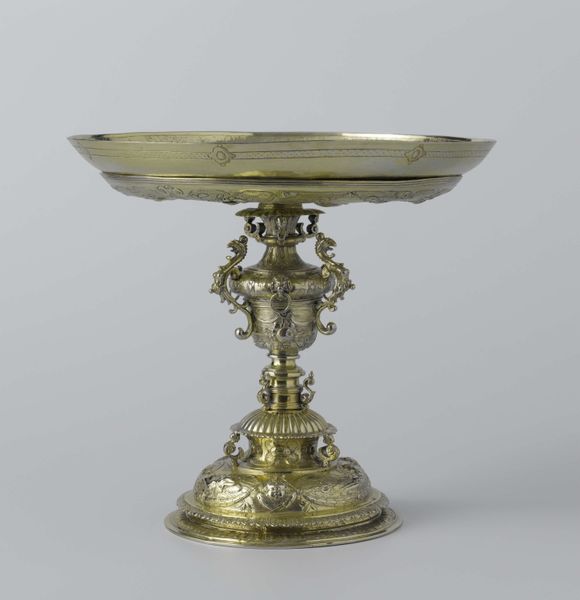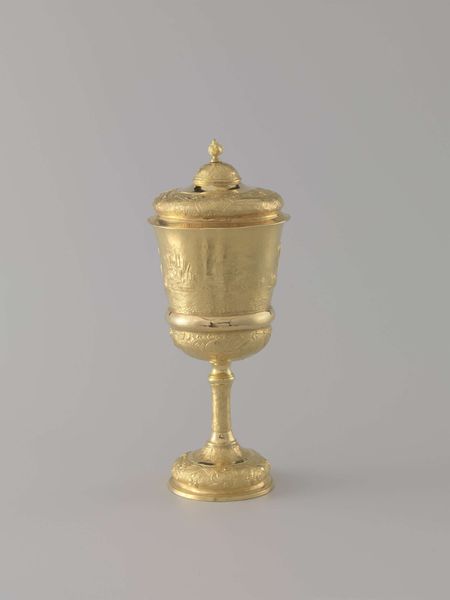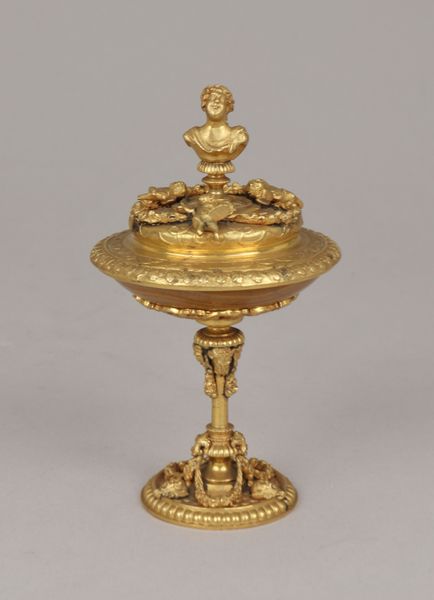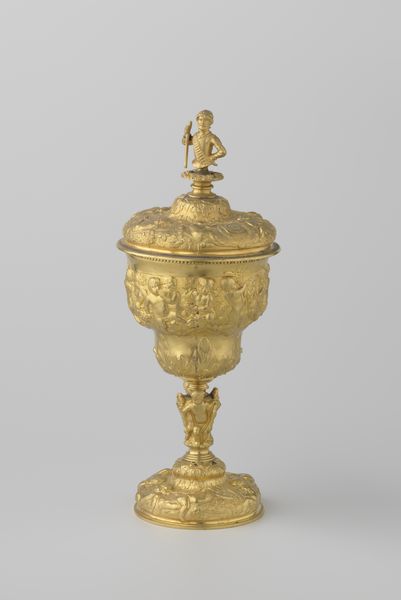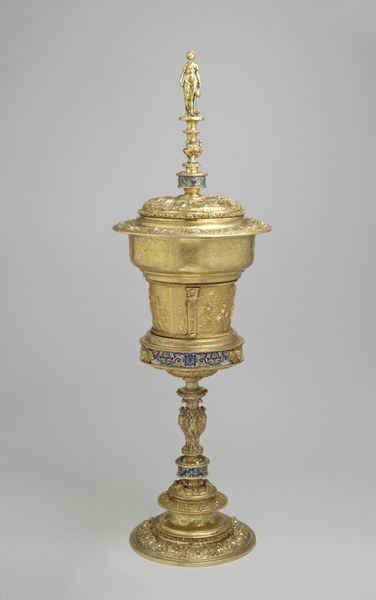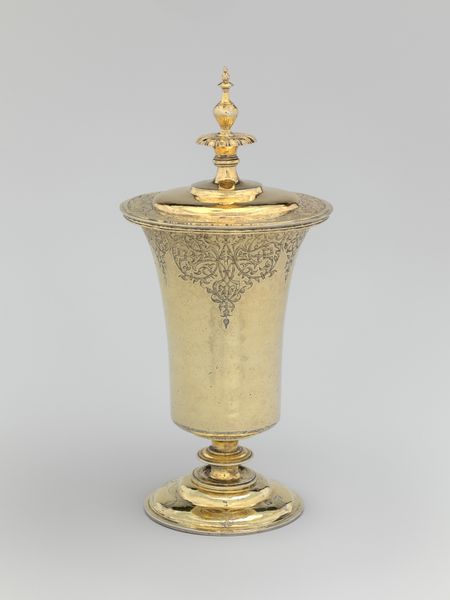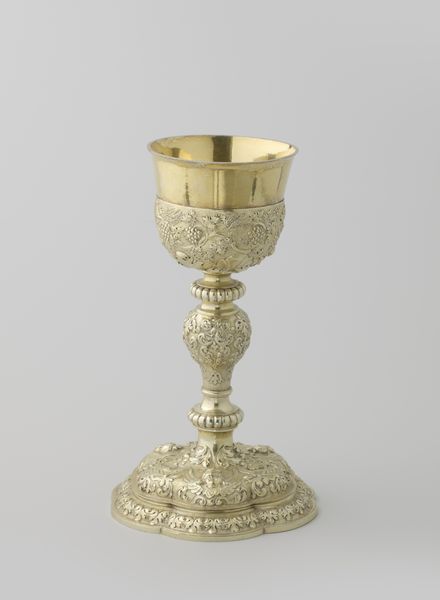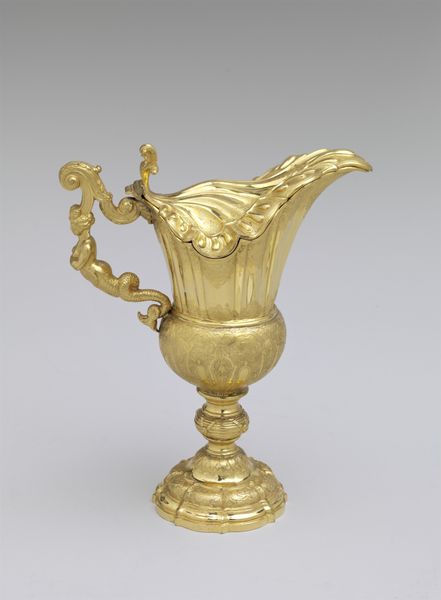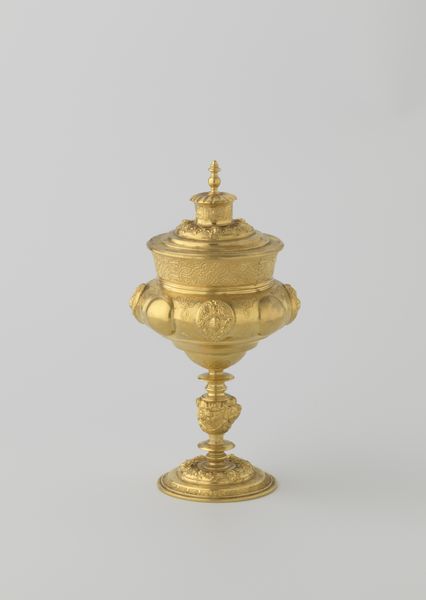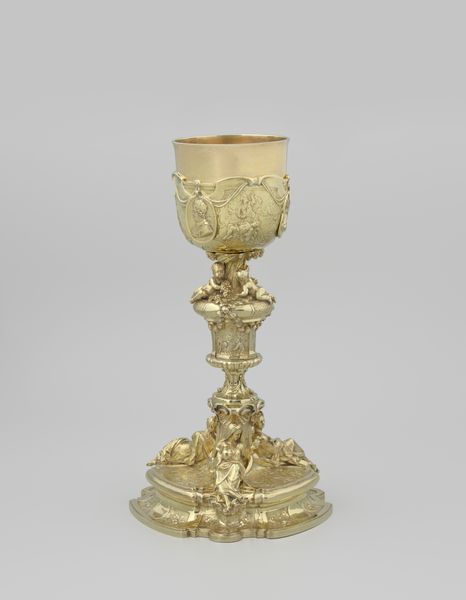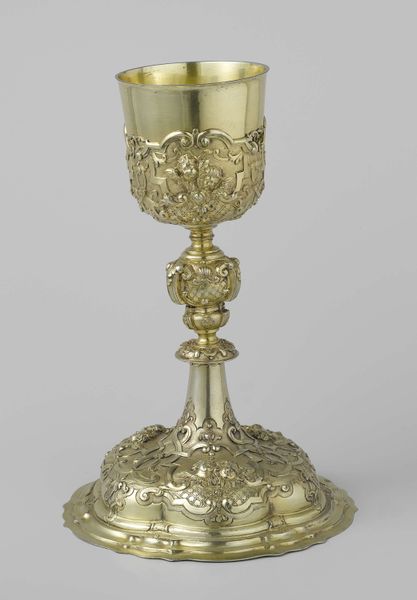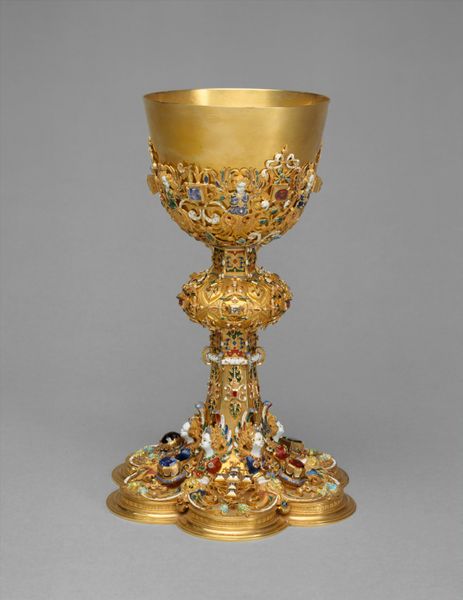
Dimensions: H. 9 1/2 in. (24.1 cm)
Copyright: Public Domain
Curator: At first glance, the sheer volume of ornamental details vying for attention is almost overwhelming. Editor: Indeed. What we're observing is a chalice, created by Antonio Forcada y la Plaza sometime between 1785 and 1799. It resides here at the Metropolitan Museum of Art. We can observe a convergence of brass, gold, and potentially other metals creating the intricate detailing and guilding on the piece. Curator: The way the light catches the embossed floral patterns at the base is especially intriguing. Note how these organic motifs juxtapose with the geometric precision nearer to the lip. It gives this baroque form, an unusual presence. Editor: The materials clearly underscore its significance. Beyond aesthetics, these materials denote its place in history. Ecclesiastical objects like these were more than artworks, they played a central role in the church. It represented, visibly and tangibly, the church's authority and status. Curator: Looking at the interplay between its verticality and the swelling curves, one sees how the artist utilized the Baroque style’s dramatic flair. It's a statement in volume and line. How the reflective gold surface amplifies and distorts surrounding lights gives it a kind of aura, fitting for its liturgical purpose. Editor: You know, understanding where such a lavish item might have been originally placed – possibly a dimly lit cathedral – helps us see how its artistic impact went far beyond what's initially visible now under these neutral lights in a sterile room. Think of the power it held in ceremony! Curator: Certainly. To appreciate its artistic ambition now, centuries removed, you still can notice a visual language meant to invoke wonderment through form and ornament alone. The dialogue between convex and concave surfaces also contribute. Editor: Seeing the chalice in isolation encourages one to look deeper into its past: the craftsmen, the socio-economic system supporting such luxury, the rituals where it mattered… It echoes our current times perhaps more than we recognize. Curator: Reflecting on the balance and density embedded in every centimeter of its surface shows us what truly great decorative work can be, if one has time and willingness to examine this closely. Editor: Precisely. An object brimming with tales, all waiting to be rediscovered by an observing eye willing to delve a bit further.
Comments
No comments
Be the first to comment and join the conversation on the ultimate creative platform.
